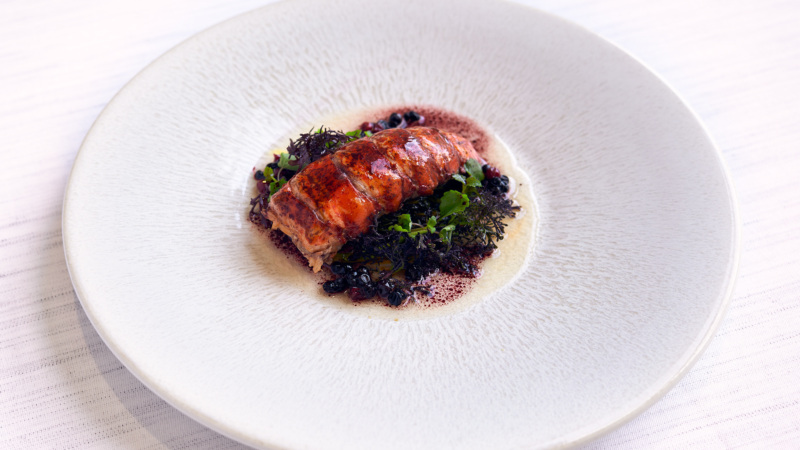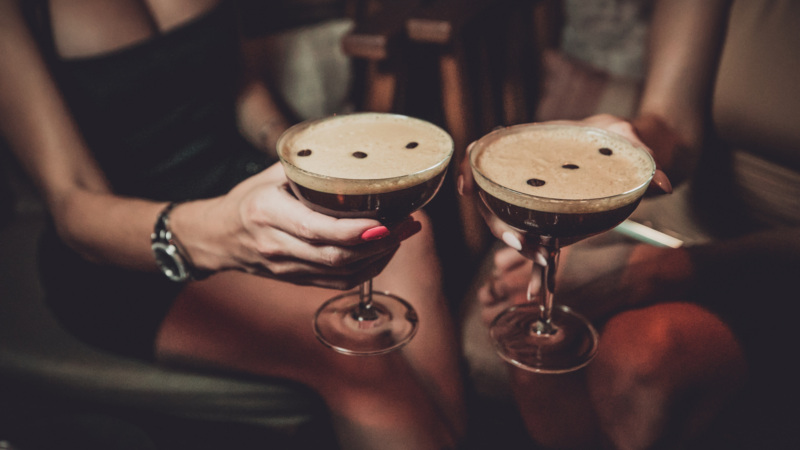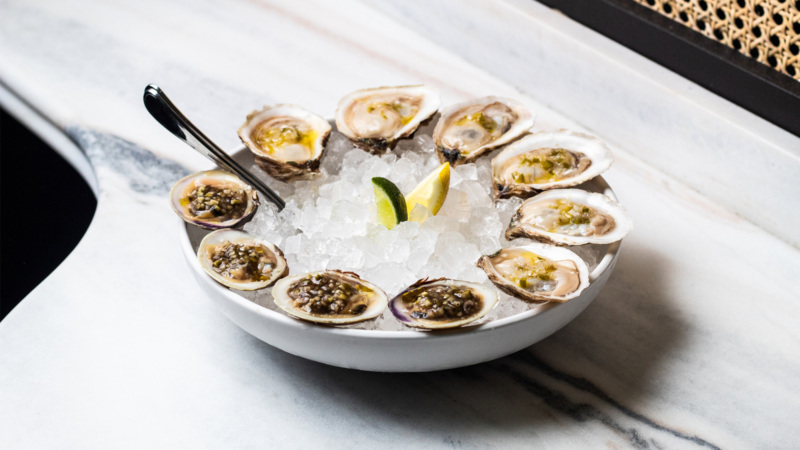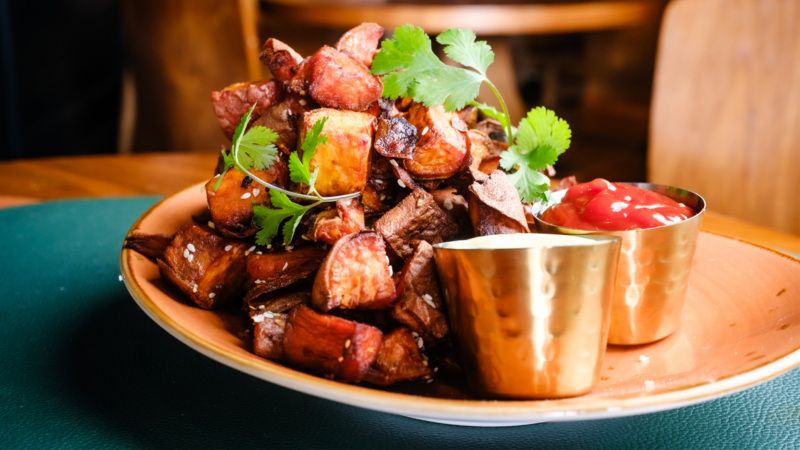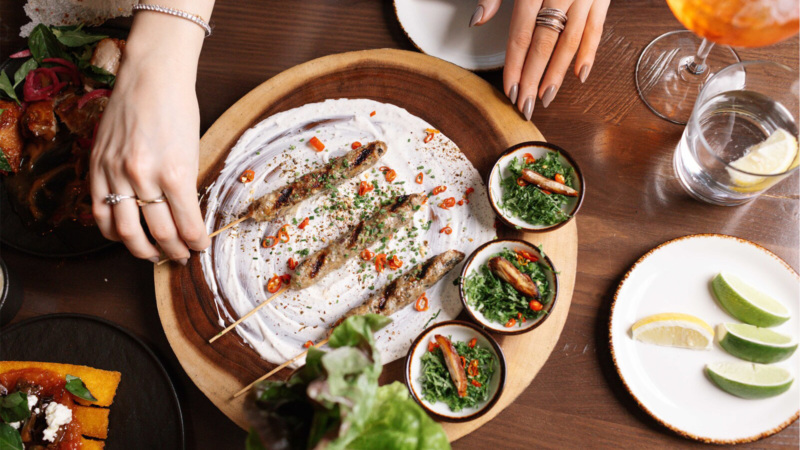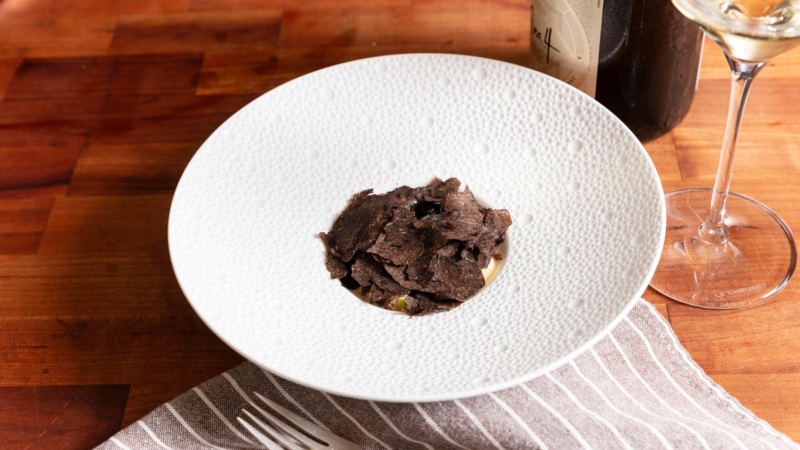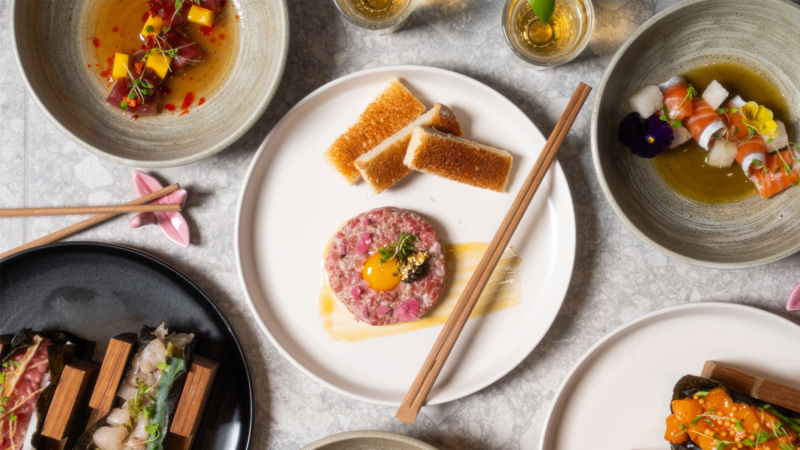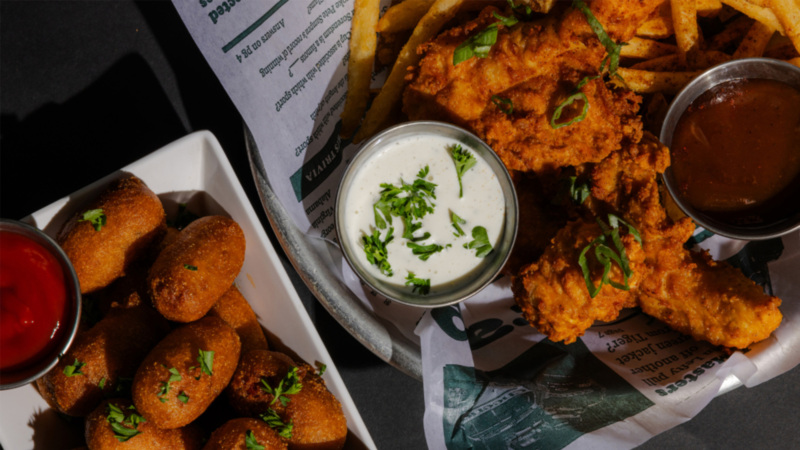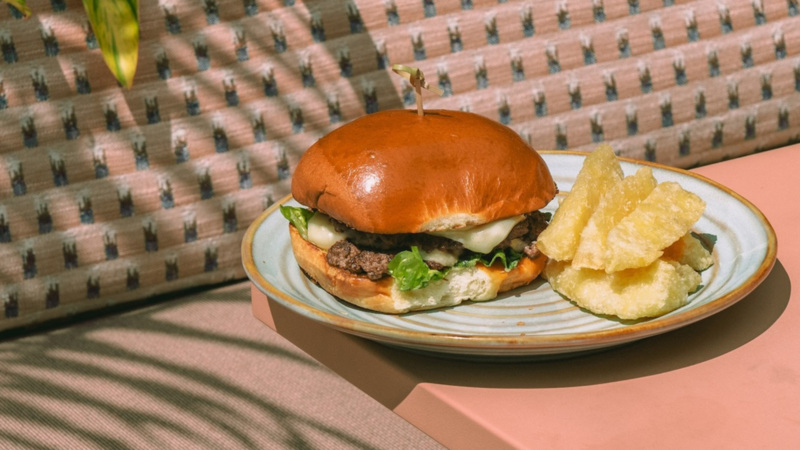
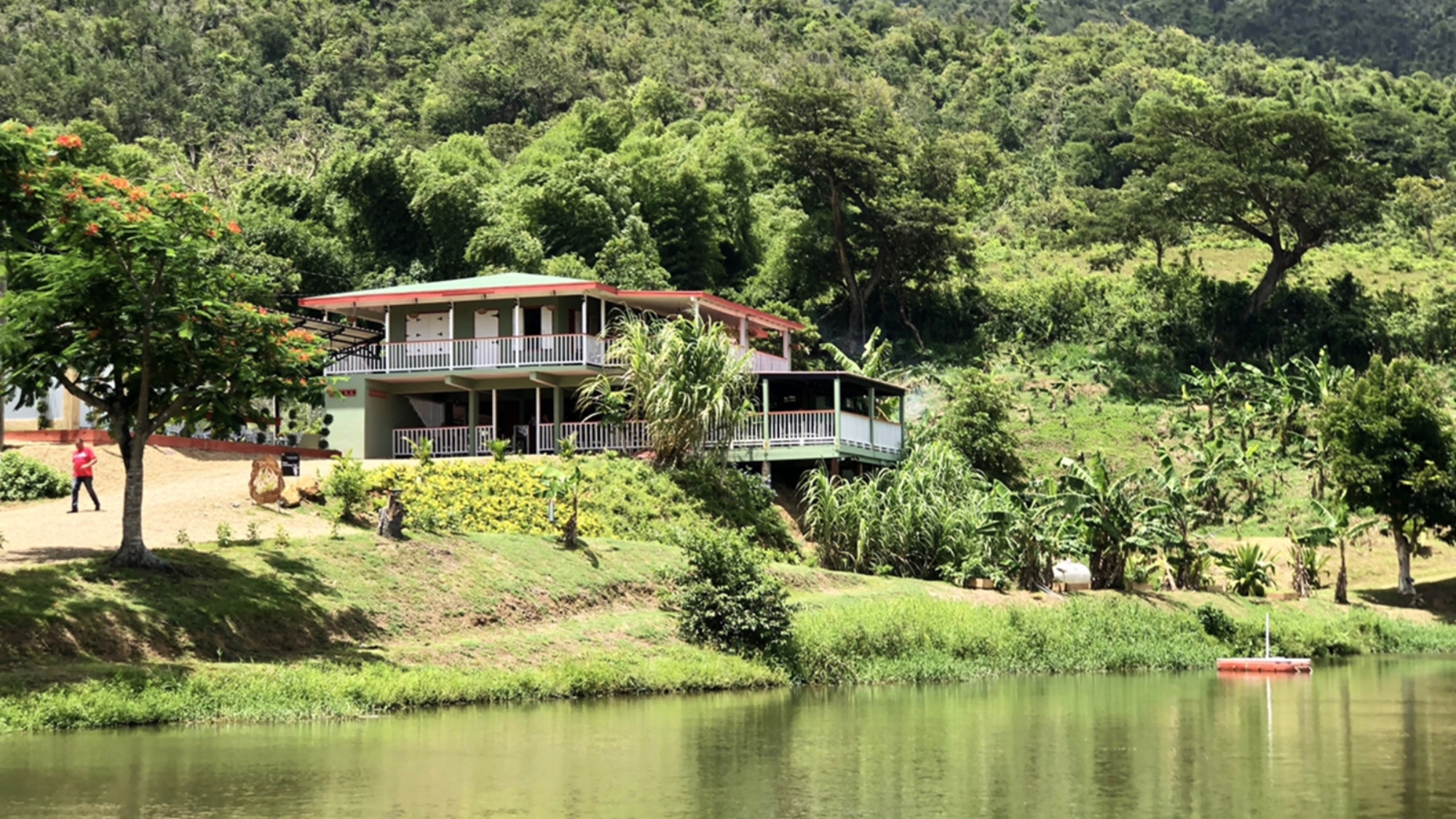
In Puerto Rico, a Destination Restaurant That Preserves (and Redefines) Its Culture
My nana was born in Manati, Puerto Rico. She didn’t have access to a car, so she walked through the countryside. She lived in a wooden house that sat on stilts. The house had dirt floors — “You just keep adding water to the dirt until it turns hard and put a mat over it,” she once told me. The windows were mere portals that opened up to allow fresh air inside; no glass or screens. The kitchen — I use the term loosely — was outside. There, the fogón had to constantly be fueled by wood in order to keep the fire roaring for frying, manipulated by hand to keep the fire intermediate for simmering guisaos, and perfected for slow roasting. Her entire life was open to the elements and her value was open to interpretation.
I hope that at least once she looked up and admired how the palm trees sway when the Sahara winds occasionally trickle in dust from Africa. Or, how those fat prehistoric iguanas waddle-scurry when they’re late for their appointments.
I hope that she had a moment to think of all the things I’m currently thinking while I sit on this open veranda-turned-dining-room on a finca in the mountains of Puerto Rico. This moment is the only revenant I have into my nana and her generation’s way of life.
The hacienda’s open dining room where I’m currently sitting belongs to Bacoa.
Bacoa is a restaurant in the town of Juncos, where owners, chefs and industry lifers Raúl Correa, René Marichal and Xavier Pacheco are cooking local ingredients over open wood fires. These names are not unknown in Puerto Rico and possibly not even to you; Pacheco can be seen side by side with the late Anthony Bourdain on Season 10 of “Parts Unknown: Life After Maria.” The hacienda was a shell that had been ruined by the devastating winds of Hurricane María. The former owner of the property offered Marichal a “rent to own” option and the trio brought it back to life. Bacoa sits on a 3.4-acre finca with a natural pond fed by a nearby stream.
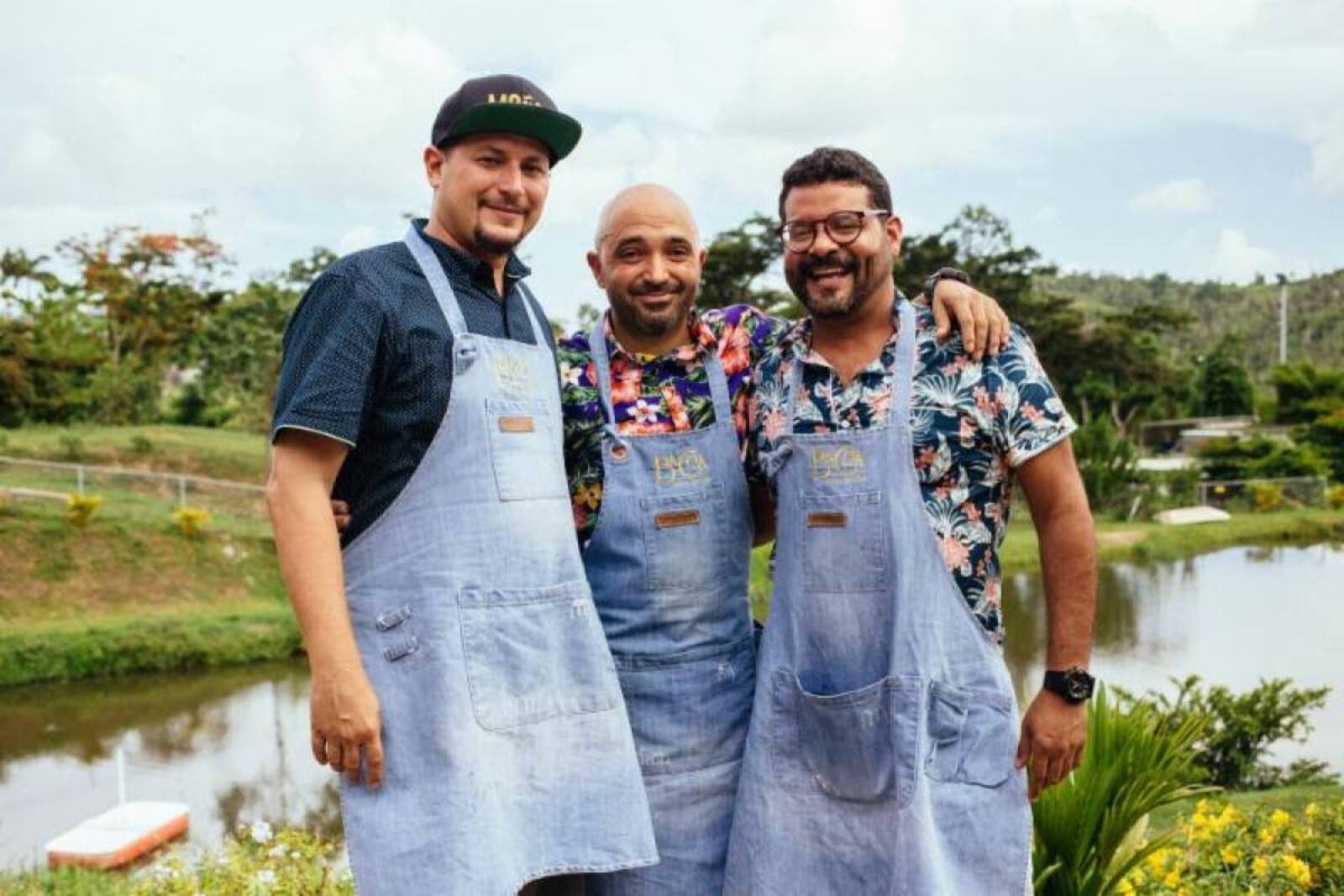

To get to the town of Juncos, where Bacoa is, our Jeep Wrangler found itself wading through deep pockets of standing water on the highway as we drove directly into a tropical storm/cloud burst. The chatty cabin had become quiet with sporadic squeals of anxiety. Vision was at best minimal, except for hazard lights. Some drivers pulled off onto the roomy shoulders to wait it out. The tropical marine climate of Puerto Rico is unpredictably predictable. We may have been driving on an asphalt highway, but it was clumsily assembled in the midst of dense jungle and Flamboyan trees. We pushed on. The weather finally went fair just in time for us to navigate the attempts at infrastructure. Turn off a narrow winding two way road, made more narrow by the botanical overgrowth, and into a gravel parking lot. Hoof it up an incline where, for the last three years, a two-story former hacienda, built by the Puig family about 35 years ago, has been used as Bacoa.
Some of the Bacoa menu ingredients — fish, rabbit, cheese, guinea hen — come from the neighboring farms and nearby fishermen. A meal here is a tour de force, with one dish after another landing with inspiration and flavor.
Raul brings out a whole branzino, grilled on the burén, and topped with calabaza and pickled chayote sliced paper thin. The fish is perfect, with crispy skin and satiny flesh.

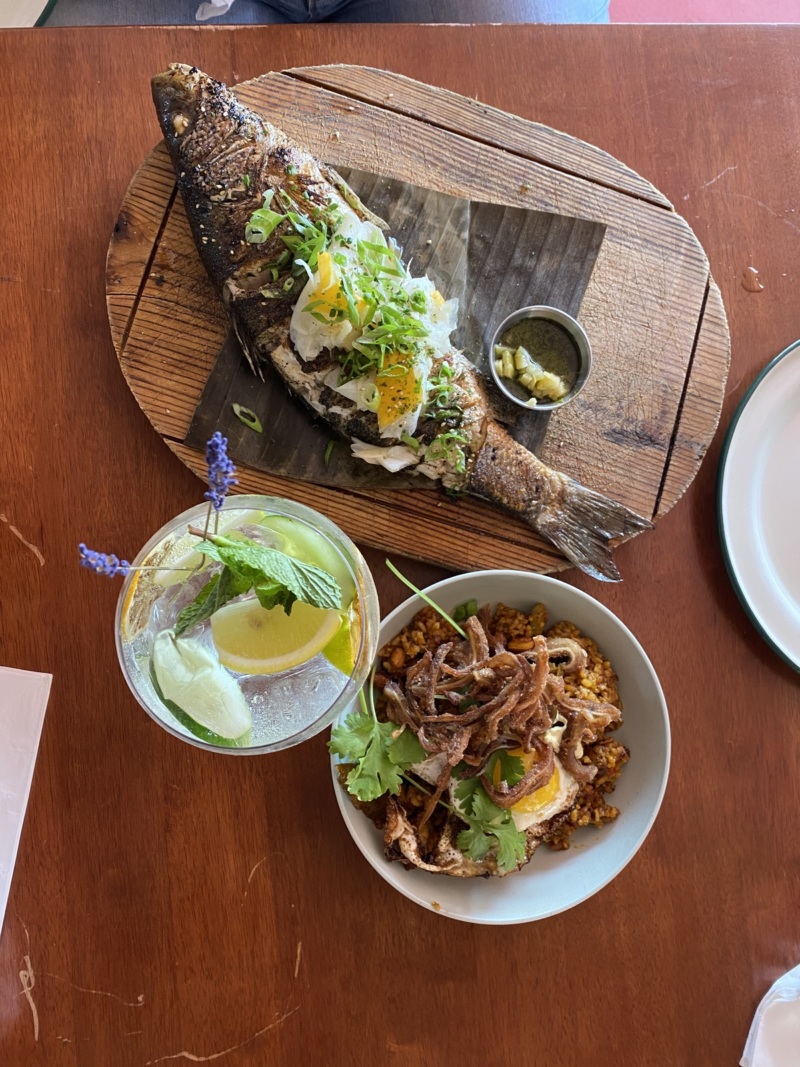
Fideuá montaña, a fitting tribute to a traditional Catalan fideo paella. The short spaghetti strands are cooked in a shallow paella pan where they turn juicy from absorbing all of the protein fats and juices (in this case longaniza and pork belly) and the exposed strands turn crunchy from being kissed by the flames. There are fierce flavors working together in this dish.
Although I grew up eating rabbit (my nana made a delicious fried rabbit), it is not something that’s often found in restaurants. Bacoa’s whole roasted rabbit is one of the best things on the menu. The bitterness of the char coalesces with the rich taste of the meat, leaving residual smokey extract on your fingertips that you wouldn’t dare waste by wiping off with a napkin. And be warned, if you’re attuned with your hominid instincts, you will inevitably start to consume this rabbit with your hands. Otherwise, order something else.
The chefs claim that their menu isn’t traditional. But, this is sophisticated Puerto Rican food.
The rabbit makes a great companion to the roasted pumpkin on the menu, which comes topped with a cashew ricotta and a sprinkling of granola made of mixed nuts. The pumpkin is shriveled, blackened and scorched. The edges have become shards. Its interior opulent flesh is soft and sweet.
Tostones, an otherwise afterthought type of item, came with longaniza made by Pedro Alvarez (Alcor Foods, Inc), who does not shy away from flavor. The intensity of garlic is the wallop that keeps these tostones interesting when eaten together.
The tostones appear on the starters portion of the menu, next to the bacalaitos. Bacalaitos are an iconic Puerto Rican snack made with bacalao, dried and salted cod that’s been soaked overnight, simmered, broken down, mixed into a seasoned batter and fried. The result is a golden brown, salty, smokey-ish, crispy fritter; the edges turn lacey and the center remains slightly chewy.
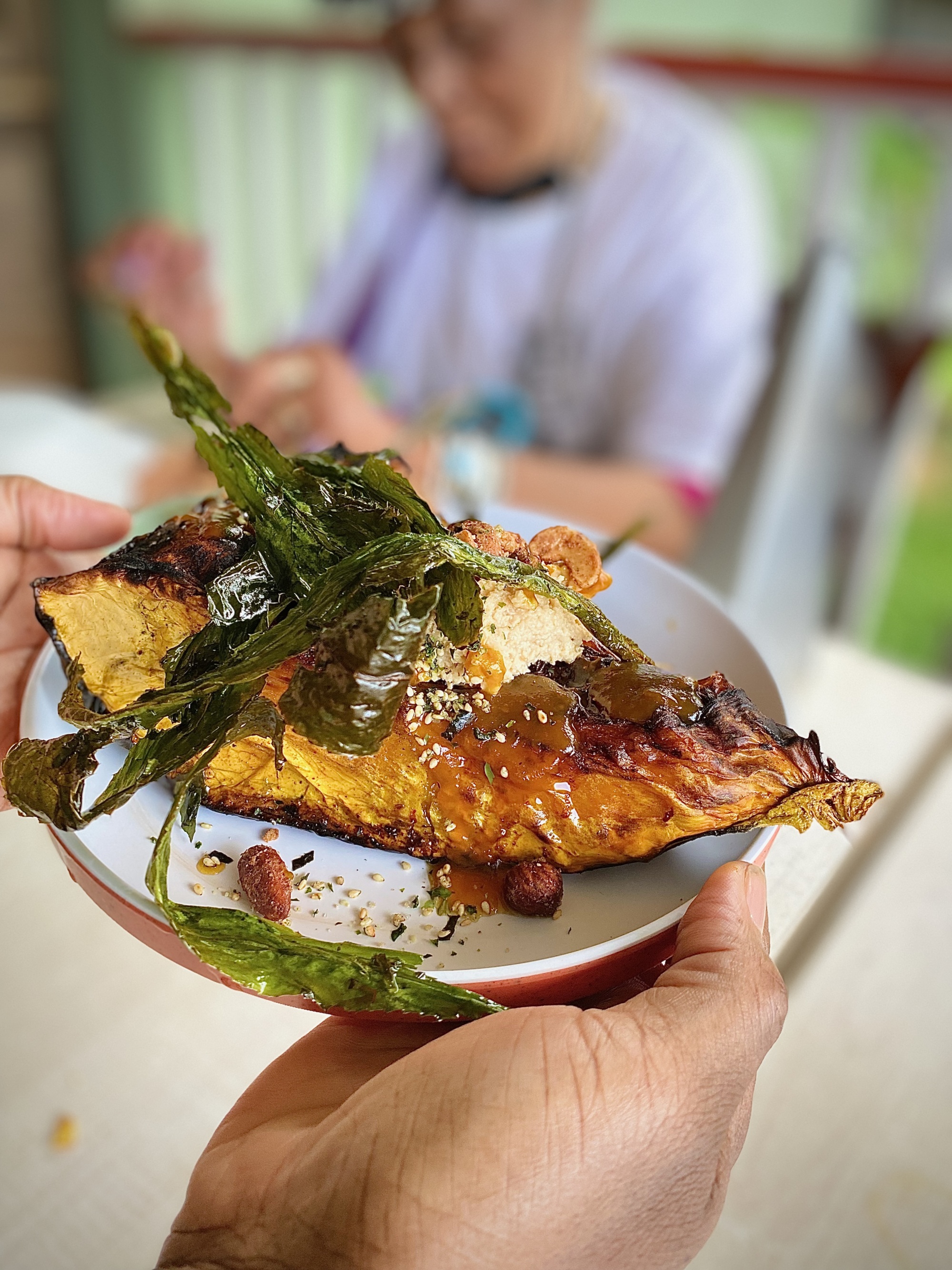
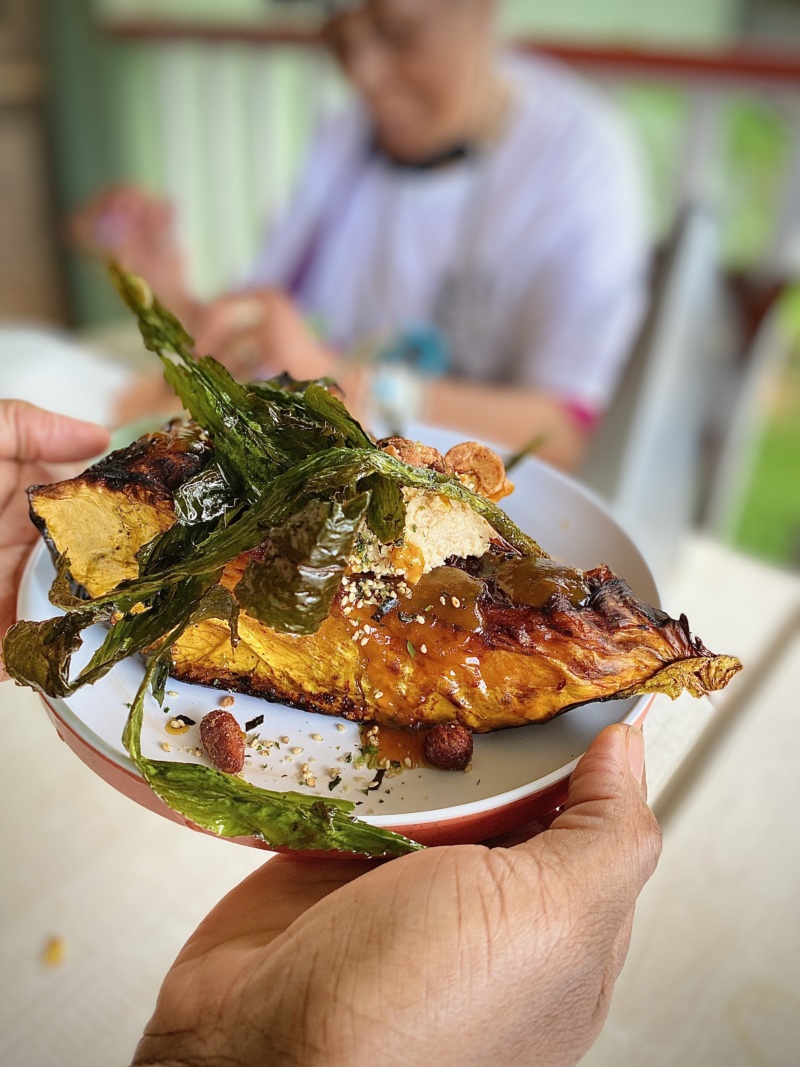
The chefs claim that their menu isn’t traditional. But, this is sophisticated Puerto Rican food. From the usage of hyper-local ingredients to the fogón wood-fire preparation my nana learned as a child, this cooking is birthed from non-colonial Puerto Rican tradition.
By the time the food of Bacoa lands on the table, it has evolved into a sort of specifically island language that can only exist in Puerto Rico. Barbacoa — which is what Bacoa is named after — is the Taino word for the grill on which the meat was cooked, chronicled in 1526 after colonizers witnessed the Indigenous people cooking their food over an open fire, utilizing green wood woven together to form a grid-like surface, described as “like a grating or trivet over a pit.” The Spanish brought pigs to Puerto Rico in the 1500s, around the same time they brought pigs to the southeast United States. Together, the two regions seemed to have created their iconic forms of cooking whole hogs in parallel. Anyone who’s ever built a fire for a cookout, tended the fire, and then stood at the fire cooking more than hot dogs and hamburgers knows the process is far from a casual cookout. It’s arduous. Luckily for you, you get to enjoy the pleasures of the hard work via sobremesa.
I have read articles and even guidebooks written by non-Puerto Ricans that claim that Puerto Rican food is solely “fried food.” That’s bull—. It tells me in an instant that they’ve failed to eat anywhere outside the San Juan area. Let them come to Bacoa and eat conejo with a side of their words.
And they are starting to come. The restaurant is busy. It’s loud. The good news is, when you look around the room, most of the restaurant is packed with Puerto Ricans. And with Puerto Ricans, you have a spectrum of Emperifollá: from perfumed women that would never step out without a full beat face to those who keep it relatively casual. (To be honest, Puerto Ricans always dress up. Much to Mami’s chagrin, I’m here with a white dress and chanclas. But, that trek up the dirt road ain’t gonna be easy if you’re wearing church shoes or high heels. Take that as an insider’s tip.)
Bacoa is putting in the work and effort to grow. While they claim that their menu might only be about 10% local ingredients, they’re putting in the work to close the gap of having to rely on imported ingredients, which is something that so many Puerto Rican activists and organizations have been working towards.
Hoisting my Falstaffian physique down the long gravel pathway, the coquis started to chirp during the twilight hour from beyond the swaying palms. Mami and I pause at the parcha tree, look at one another and start to cry. In a desperation to connect with my grandma, which I felt was my connection to my Puerto Rican-ness, I hope that my grandma and I have shared this common experience while I stand at the base of this finca in the mountains of Puerto Rico.
But, it seems that both Mami and I both felt Nana’s presence in this space. Maybe I’m clamoring at straws by creating this falsity that Bacoa is not rooted in casual cookouts, but rather rooted in the way of my grandma’s generation of fogón cooking. Those getting-back-to-basic bits of my grandma’s upbringing of eating wood fired fare in the cool breeze is the Puerto Rican “experience” that most people look for when they visit the island. And it’s here at Bacoa.
Illyanna Maisonet is the first Puerto Rican food columnist in the country. Her upcoming cookbook — “Diasporican: A Puerto Rican Cookbook” — is scheduled for release October 18, 2022. Follow her at @eatgordaeat.



